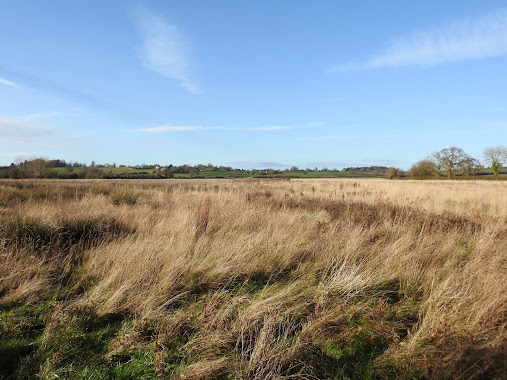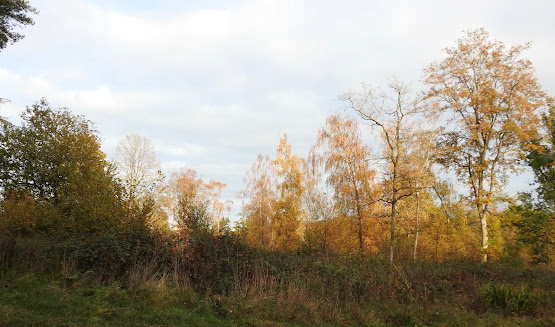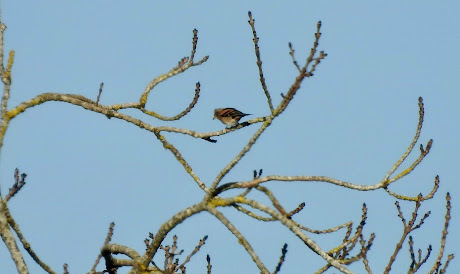The morning began quietly enough. Fog had tried to form, but then thought better of it and we were left with one of those grey misty mornings that photographers hate and birders love. It's a good job I'm a birder.
Dave joined me, and with no sign of the dog we crept past its house and headed along the road towards Bannam's Wood. A couple of Yellowhammers flew over, reminding us of the days when they were common here.
Not everything is different. A Tawny Owl has occupied the same oak tree for all of the thirteen years we have been working the patch, and sure enough we peered through the mirk to see it standing sentinel in the entrance to its nest hole.
 |
Tawny Owl
|
In late November your expectations are low and you take whatever you can get. The next thing we got was a Jack Snipe which we unexpectedly flushed from the route we follow behind the pool field pretty much every visit. I imagine it had been disturbed from its preferred habitat in the marsh, and it certainly headed back there when flushed.
Shortly afterwards we approached the flash field which has been so disappointing of late. Not this time. A couple of white blobs proved to be the breasts of two drake Shovelers and panning to the left from them I found myself looking at a female POCHARD.
 |
Pochard
|
Before you yawn, consider this. Even in the days before the pool drained away, I dreamed of finding a Pochard here. We used to get Tufted Ducks a plenty, but there was never anything with them. Since the pool has gone, even Tufted Ducks are becoming scarce. I thought my chance had gone. The flash pool has been unusually full of water this year, but it's still only about two feet deep I reckon. Not great for holding flocks of diving duck.
 |
Shoveler and Pochard
|
We scanned the rest of the flashes and came up with 15 Teal, a similar number of Mallard, four Shoveler, a Wigeon, and two Snipe. About 15 minutes later we arrived at a point nearer the flash and found it empty. The ducks had gone. Clearly the Pochard had realised its mistake and had gone to look for water deep enough to sustain a dive longer than half a second.
The walk back along the Morton Brook was a cheerful one. A flock of 10 Bullfinches flew up from the trees, while numerous Fieldfares, Starlings, and Redwings were still keeping us entertained. Dave commented that he was glad he'd been here to see the Pochard and that led onto a "birds I've seen here that Dave hasn't" conversation. I only mention this because one of those birds is Woodcock, and as we happened to be walking past Stapenhill Wood, the last place I saw one, he suggested we have a look.
This small wood is about as overgrown as they come. I picked my way across tree stumps and through drooping nettles through the centre of the wood, while Dave disappeared from sight behind a huge bank of brambles and fallen trees as he followed the course of the brook. Suddenly I flushed a Woodcock, shouting and pointing I turned to see no sign of Dave. Eventually he emerged dejectedly from the undergrowth and we resolved to stick closer together.
Ten minutes later we were out of the wood and I flushed it again. "There it is !" as it shot through a gap in the hedge. This time Dave did see it, but without having time to raise his bins. We felt a little better. Patch tick number two for Dave. But the bird hadn't finished with us. Ten more minutes later, as we skirted the ridge field, I picked it up again. This time we saw it well as it headed past us determinedly returning to the safety of Stapenhill Wood. I have a slight regret that my camera was back in my bag, but I may not have got a shot anyway.
Now that's what I call a good day.









































